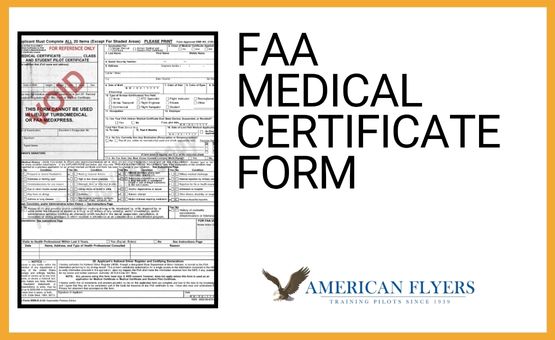By: Steven Daun, National Chief Pilot
Students new to flight training must complete several tasks, including obtaining their FAA Medical and Student Pilot certificates. However, pursuing these certificates before starting training can have unintended consequences. Some lenders require an unrestricted first-class medical certificate for career training loans, and many international students obtain their medical certificate before coming to the U.S. to ensure they pass the exam.
Incorrect responses on IACRA or MedXPress applications can lead to accusations of falsification, with severe consequences, including criminal prosecution or revocation of certificates, even for honest mistakes.
This article provides a guide to the FAA Medical Application process, focusing on common misunderstandings. The FAA launched MedXPress in 2007 to streamline the application process. Applicants complete Form 8500-8 online, which is accessed by the Airman Medical Examiner (AME) during the exam.
The first step is to select the class of medical certificate you need. For a professional aviation career, a first-class certificate is recommended. For recreational flying, a second or third-class certificate suffices.
Box 3: Name– Choose your “Aviation Forever Name” (first, middle, last) to use consistently on all aviation-related documents. Make sure this matches your ID (e.g., passport). Failing to use the same name can lead to a complex correction process later.
Box 4: Social Security Number- As of June 1, 2002, the FAA assigns unique certificate numbers. Leave this line blank; you’re not required to disclose your SSN.
Box 5: Address– Provide your street address. If using a P.O. Box, include a map and home description. Note that a foreign address may cause delays in receiving time-sensitive FAA correspondence.
Box 6: Date of Birth- Enter your date of birth using a two-digit number for the month, a two-digit number for the day, and a four-digit number for the year.
Box 7: Color of Hair– Only the following hair colors are permitted: Brown, Black, Blonde, Gray, or Red. Do not abbreviate or use any other colors. If you are bald, enter “Bald.”
Box 8: Color of Eyes- The only permitted eye colors are Brown, Black, Blue, Hazel, Gray, or Green. Do not use abbreviations or any other colors.
Box 9: Sex- Enter either Male or Female. Do not use any other options.
Box 10: Type of Airman Certificate(s) you hold- Select the certificate(s) you currently hold, not the one(s) you are pursuing. If none, select “None.”
Box 11: Occupation- Enter your current career. If you’re a student, write “Student.” If unemployed, write “Unemployed.”
Box 12: Employer-If you’re employed, list your employer’s name. If unemployed, write “Unemployed.”
Box 13: Has your FAA Airman Certificate Ever Been Denied, Suspended, or Revoked?- If you’ve never held an airman certificate, select “No. If you’ve held a certificate but are unsure of its current status, contact the FAA Airman Registry in Oklahoma City for clarification.
Box 14: Total Pilot time (Civilian Only)- If you have previous flight time, enter those hours here. Indicate whether the hours are logged or estimated by writing “LOG” or “EST” next to the number of hours. If you have hours from the military, don’t enter those in this block; it’s strictly for civilian hours only
Box 15: Past 6 months- Enter the total number of hours you’ve flown in the last six months.
Box 16: Date of Last Medical Application- Enter the date of your most recent medical application, even if it didn’t result in a certificate. If you’re unsure, it’s acceptable to estimate the year.
Box 17(a): Do You Currently Use Any Medication (Prescription or Nonprescription)- List all prescription and nonprescription medications you take. This is a critical section, as many pilots forget to include medications in their applications. Failure to disclose medications can lead to scrutiny, investigation, or a deferral with a request for more information. It’s best to list everything up front to avoid delays.
Check the FAA’s approved medication list at www.faa.gov. If your medication isn’t listed, consult your provider for alternatives.
Box 17(b): Do You Ever Use Near Vision Contact Lens(es) While Flying?- This question specifically pertains to “Near Vision” contacts or glasses. If you answer “yes”, the AME may have follow-up questions during your visit.
Box 18: Medical History- Exercise caution in this section. Carefully review Sub Boxes “a through u” (medical history) and Boxes “v” and “w” (conviction/administrative actions). The lower part of this box provides space for explanations. This section comprises 22 sub-boxes, and you must check all that apply.
Applicants often hesitate to answer “yes” for fear of being disqualified. However, reporting conditions like “Frequent or severe headaches” only applies to regular, performance-impacting occurrences, not occasional headaches.
Selecting “Yes” in the “Medical History” section doesn’t automatically disqualify you from a medical certificate. If you answer “Yes” to any condition, the Airman Medical Examiner (AME) may request more information or issue a medical deferral. Providing detailed information and relevant medical records can aid the AME in their assessment, potentially streamlining the process. If you receive a follow-up letter, it will outline the information needed for your approval.
The most critical aspect of this section is accurately responding to the Conviction and Administrative Action History.
Box “v”: Drug or alcohol convictions and driving-related administrative actions.
Box “w”: All other non-traffic-related convictions, including misdemeanors or felonies.
Incorrect responses in Boxes “v” and “w” can result in serious consequences, including potential FAA charges for falsifying information. If you’re unsure how to respond, consult your training provider. If you check “Yes,” be prepared to provide court documents and detailed explanations to the FAA. Honest disclosure is essential for a smooth application process.
Box 19: Visits to Health Professionals Within the Last 3 years- List all health visits in the last three years, excluding routine dental, vision, and FAA physical exams. If you’ve had multiple visits to the same provider, you can summarize them in one line.
Box 20: Applicant’s National Driver Register and Certifying Declarations- By signing this, you authorize the FAA to check your driving record. Ensure your information is accurate to avoid complications.
The FAA rarely outright denies a medical certificate. Most critical issues can typically be resolved through an organized process. If the AME cannot process your application due to insufficient information, they will issue a deferral, indicating the need for more details.
Receiving this letter from the FAA can be concerning, but don’t panic. Focus on the bullet points detailing the additional information required and the response due date. Address these promptly to facilitate your application review.
After gathering the requested information, draft a response letter outlining what you’re submitting and explaining the related issues. Expect to wait 30 to 120 days for a response from the FAA, usually in the form of a letter granting your medical certificate or requesting more information. Remember, this letter will be mailed, so plan accordingly if you’re using a foreign address.
To prepare for the FAA Medical Application process, compile a list of medications, health records, healthcare visits, and any necessary legal documents. Bring this information to your AME appointment. Proper preparation can save you months of back-and-forth.
If you’re unsure how to answer any questions, seek guidance from your school official. If you’re a student or plan to enroll at American Flyers, contact your National Support Team representative for assistance.










